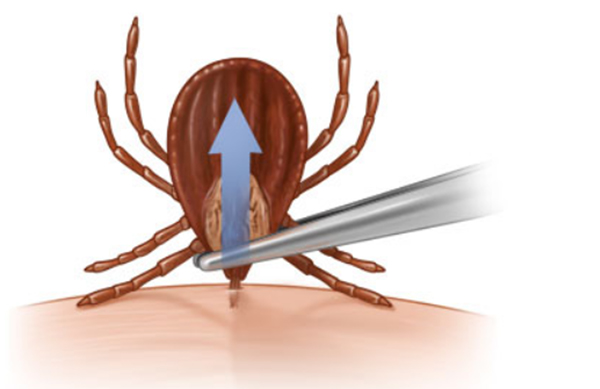Home »

Let’s talk about ticks
 Spring is here and the warmer weather means more people will be out hiking in tall grass or wooded areas which can also mean an increased chance of getting tick bites.
Spring is here and the warmer weather means more people will be out hiking in tall grass or wooded areas which can also mean an increased chance of getting tick bites.
Ticks are small bugs that bite and feed on the blood of humans and animals and can sometimes transmit disease. Fortunately, there are precautions people can take to prevent illnesses that may be transmitted from tick bites.
“There are easy things you can do to protect yourself from ticks such as covering up before you head outdoors and checking for ticks when returning from a walk, hike or bike ride,” said Dr. Fatemeh Sabet, Interior Health medical health officer. “Most tick bites do not result in illness; however, any bite from a tick should be cleaned because infection can occur whenever there is a break in the skin.”
Ticks also have toxins that can cause temporary muscle weakness and paralysis if they are attached for several days – especially in children or seniors – but the symptoms fade once the tick is removed from the skin. The signs of many tick-borne infections can be quite similar and include fever, headache, muscle pain and rash.
One of the most important ways to reduce the risk of tick illnesses is to do a skin check on yourself and your children after being outdoors.
As well, follow these additional precautions:
- Walk on cleared trails when in tall grass or wooded areas.
- Wear a hat, long sleeves, pants and light-coloured clothing.
- Tuck pant legs into socks or boots.
- Apply insect repellent containing DEET on uncovered skin.
- Carefully check clothing and scalp (covered or not) when leaving an area where ticks may live.
- Regularly check household pets for ticks.
If you find a tick on yourself, a family member or pet, wear gloves when removing it and be careful not to crush the tick as this could cause it to inject its stomach contents into your skin.
Other tips to remove ticks safely include:
- Use needle-nose tweezers to gently grasp the tick close to the skin.
- Without squeezing, pull the tick straight out.
- After removal, clean the area with soap and water.
- If you find a tick, check very carefully for others.
You can report a tick and submit a photo to eTick.ca to have it identified.
Most individuals with acute Lyme disease do not notice the biting tick that precedes the illness. If you have concerns or need assistance removing a tick, please contact your family doctor or visit a walk-in medical clinic.
Quick facts:
- While ticks are common in the Interior Health region, most are the wood tick (Dermacentor andersoni) which do not carry the Lyme disease bacteria. The wood tick can carry other diseases such as Rocky Mountain spotted fever, although it is rare.
- Lyme disease-carrying ticks (I. pacificus) are more common in the coastal areas of B.C.Anyone who has the typical bull’s-eye target skin rash of Lyme disease, or other symptoms compatible with Lyme disease, should see their physician.
Interior Health







